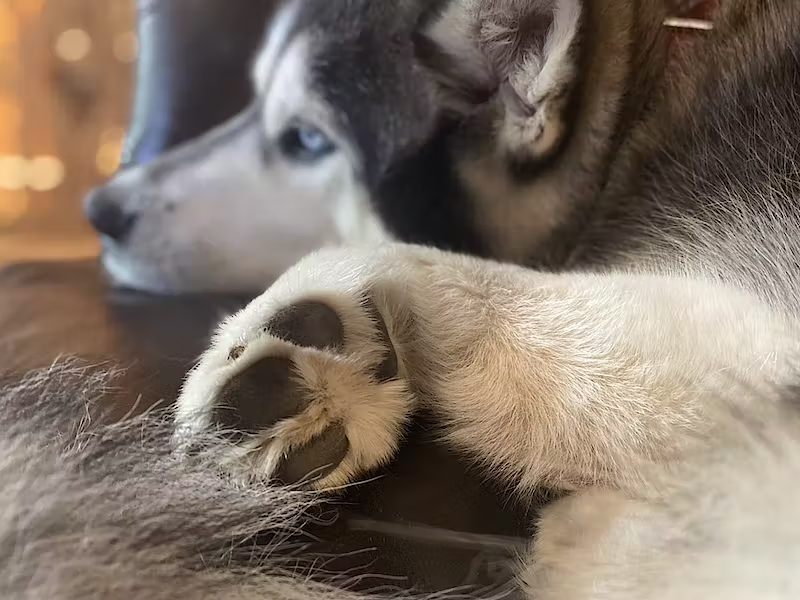Dog Paw Health and Maintenance Tips
Paw health is essential to keep up with when owning a service dog so that they are able to function to their highest ability for the sake of their handler. There are plenty of factors to consider when thinking of how to care for the four paws that carry a dog and the person they provide their service for. General trimming and hygiene, conscientiousness around exposure to surfaces of extreme temperature, and different textured surfaces that could cause abrasions.
Ongoing Maintenance
Keeping up with nail / hair trimming around paws is more important than one might think. When nails become overgrown, it increases the likelihood of one catching and potentially ripping off, or splitting which can impair walking and be very painful. When nails are left untrimmed for a long enough period of time, the nail beds grow farther into their claws which makes them harder to trim later down the line. In addition to this, keeping the fur between the paws trimmed also reduces the chance of snow or mud matting between their toes and causing discomfort. Dogs will instinctively try to chew out matted fur that is causing this discomfort, which can sometimes cause their paws to bleed. By viewing paw maintenance as a type of preventative care for your dog, many painful injuries and mishaps can be avoided.
Temperature Extremes
Much like humans, dogs can experience frost-bite in dangerously low temperatures. When dogs get frostbite on their paws, they experience damage to sensitive tissues that later inflame and become irritated when warmed. This can result in blisters, swelling, pain at the touch, and sloughing of the skin. The clinical signs of frostbite may take days to appear in dogs, so it is incredibly important to be diligent in having your dog wear the proper protection during very cold days such as booties or certain types of paw balm, or avoiding lengthened exposure to cold surfaces.
The converse can be just as damaging to canine paws. Very hot surfaces such as sand or concrete that has been baked in the sun on a hot summer’s day can severely damage and burn the delicate tissues of a dog’s paws. Much like frostbite, paws will blister, swell, become inflamed, and even cause skin to peel. Avoiding these surfaces / conditions can be incredibly beneficial in keeping your companion safe.
Surfaces
Textures and frequency of use can also greatly influence the health and function of a dog’s paws. Long walks can be very beneficial for dogs of course, but the surfaces and speed of which need to be considered. Sharp jagged rocks, gravel, and other abrasive materials can slice and rip paw pads, which can lead to discomfort, limping, and general sensitivity. For shorter periods of time, this may be fine – but prolonged friction on runs and long walks could potentially be very damaging. It is important to always check the paws of your dog following any prolonged or strenuous activity.
Despite the Service Dog being seen through a working lens, it is crucial for recipients and handlers to understand that although the dogs are providing their care and support, it is the obligation of the owner to diligently care for their animal to ensure both elements of their team are functioning to the best of their abilities. Paw care is such a simple element of maintenance in owning a dog, but can make a huge difference for the dog’s comfort, and subsequent efficacy to their owners.


